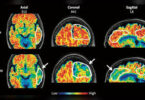Monitoring Desk
BERN: A researchers team from the Swiss research group NeuroRestore has identified neurons that might help restore the ability to walk for those who are paralysed, a new study published in the journal Nature reported.
Many thought that this was an impossible thing to do, but scientists have finally managed to recognise the cells that restore walking ability.
While the study was originally published in September, the findings are gaining attention now considering the ability to walk again in paralysed individuals is a huge game-changer.
The authors have discussed a neuron that is activated and remodelled by the stimulation of the spinal cord. If the process is successful, it leads the paralysed person to walk again.
To study the efficacy of the neuron and the effectiveness of the stimulation process in restoring the abilities of the limbs, researchers first experimented on rats. The experiment showed scientists which nerves needed to be stimulated to cure paralysis.
Following the study on mice, researchers recruited nine participants who had chronic spinal injuries. They applied the same procedure to the nine volunteers and all of them got the ability to walk back.
One of the main reasons why a spinal injury causes paralysis in the legs, stealing people’s capacity of walking, is because the signals between the spine and the legs are interrupted. The nerve cells in the spine are crucial when it comes to movement. While prior research work showed that electrical stimulation of the spine nerves could reverse paralysis, it had not been done properly yet and did not know how it worked.
The neuroscientists behind this study finally identified the exact nerve cells that need electrical stimulation and are responsible for restoring limb functions.
A surgically implanted neurotransmitter stimulates a portion of the spinal cord. The nine volunteers who took part in the study underwent five months of stimulation and treatment, nearly five times a week.
The participants were able to leave their wheelchairs behind after rehabilitation.
Courtesy: (Geonews)






